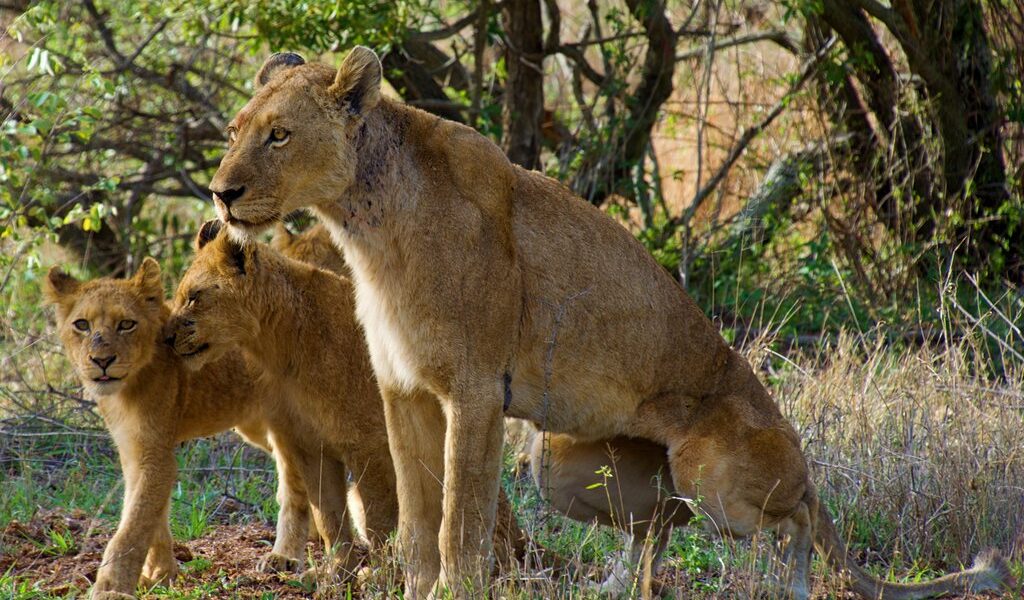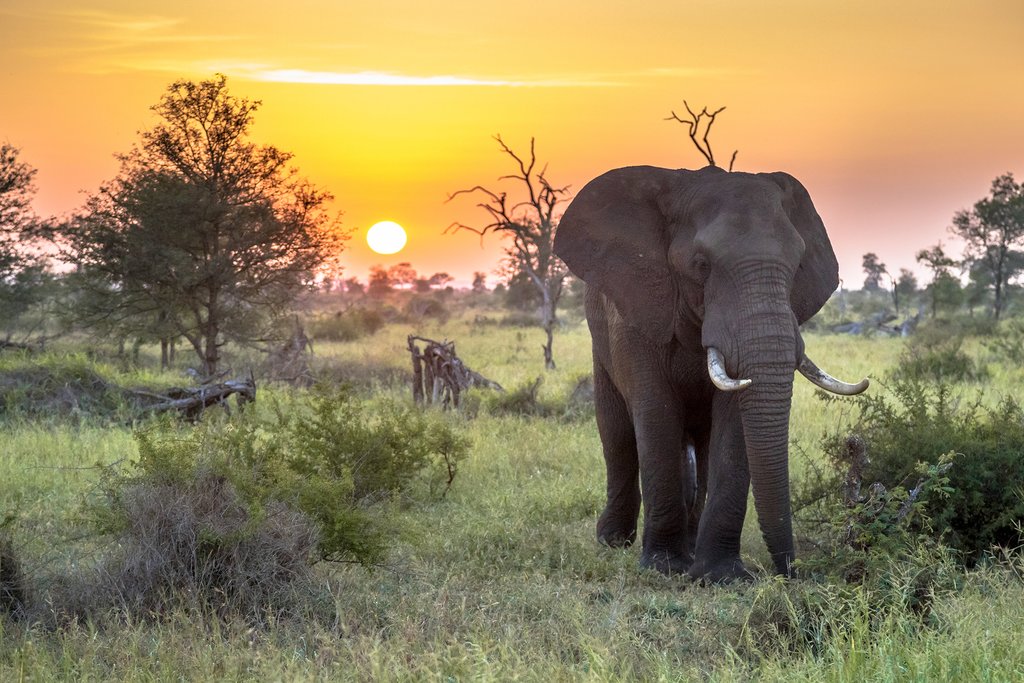
Kruger National Park is a year-round destination, but understanding how the dry and wet seasons affect game-viewing is key. Depending on how you weigh your priorities, the following information will help you decide which season is right for you.
## Delving into the Seasonal Rhythms of Kruger National Park
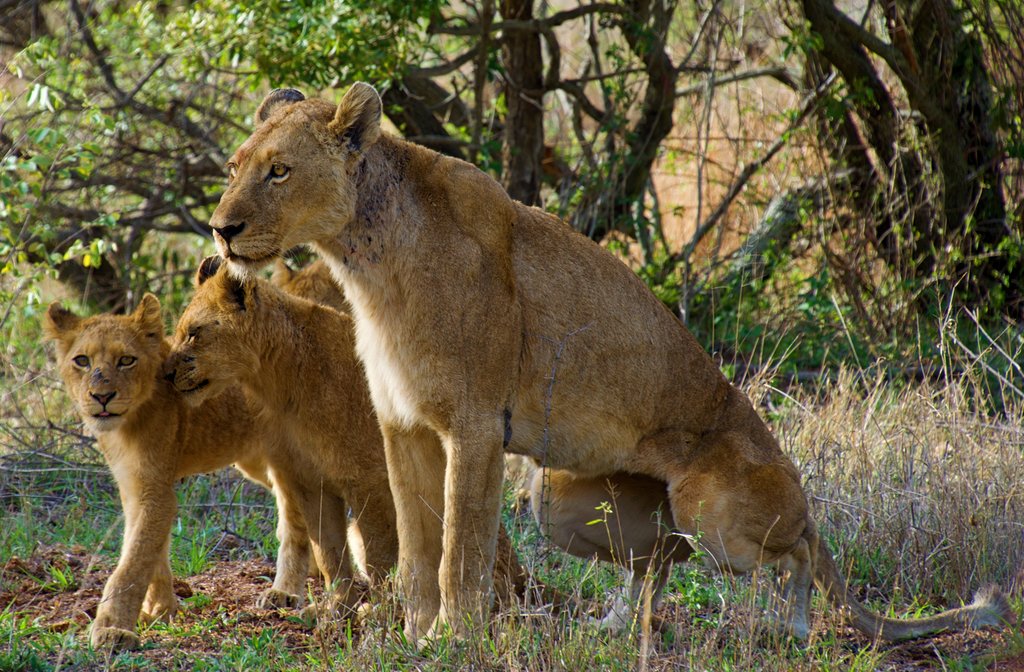
Unlike the Mediterranean climate enjoyed in Cape Town, Kruger National Park boasts a subtropical climate, characterized by clearly defined wet and dry seasons. This distinction significantly influences the landscape and the behavior of its inhabitants. Throughout the year, daytime temperatures generally range from warm to hot, making it a desirable destination for safari enthusiasts. While Kruger National Park remains a year-round attraction, the changing seasons exert a considerable impact on wildlife viewing opportunities, affecting both the ease of spotting animals and the types of creatures you’re likely to encounter.
The rainy season, spanning from October through April, coincides with the hot and humid summer months of the southern hemisphere (which mirrors winter in the northern hemisphere). Conversely, the dry season, which runs from May to September, corresponds with winter, bringing warm and mild days coupled with chilly nights and early mornings. Understanding these seasonal shifts is crucial for planning a visit that aligns with your specific interests and priorities.
Game viewing is generally most accessible during the dry winter months. This is largely because the vegetation thins out considerably during this period, allowing for greater visibility. Additionally, the scarcity of water sources leads to a concentration of wildlife around remaining waterholes, making them prime locations for spotting animals. However, the wet summer season offers its own unique appeal, particularly for birding enthusiasts. The arrival of migrant birds transforms Kruger National Park into a vibrant avian paradise. Furthermore, this is the time when the bushveld bursts into life with the arrival of newborn animals, offering heartwarming scenes of new beginnings.
It’s important to note that Kruger National Park is considered a high-risk malaria area during the rainy season, particularly from October to May. However, by taking specific precautions, you can significantly mitigate the risk of contracting the disease. We highly recommend familiarizing yourself with the information provided in the “Malaria” section below to ensure a safe and enjoyable trip.
### Exploring Kruger in Winter/Dry Season (June-August)
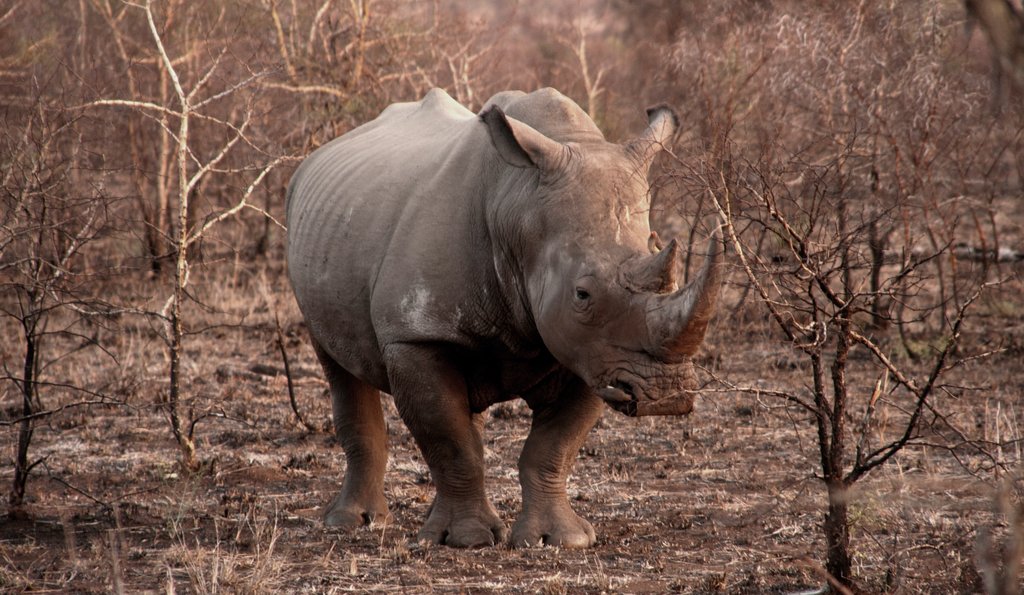
While the dry season in Kruger National Park extends from May through October, the period from June to August represents the driest and coolest phase. During these mid-winter months, temperatures are typically at their most pleasant, characterized by warm days, low humidity, and a near-total absence of rainfall. Mid-day temperatures average a comfortable 79°F (26°C) under clear, deep-blue skies. However, it’s essential to be prepared for a significant drop in temperature at night. Early morning temperatures just before sunrise often average around 50°F (10°C) and can sometimes be even colder, so layering is key.
Although malaria-carrying mosquitoes may still be present in June, their activity is significantly reduced during the majority of the dry season. While rain gear is generally unnecessary, it’s still advisable to bring sunscreen to protect yourself from the sun’s rays and insect repellent as a precaution.
**Game Viewing:** While the lush vegetation of the summer months holds its own appeal for some, game viewing during the dry season is undeniably the easiest and most rewarding. As deciduous trees turn brown and shed their leaves, the bushveld becomes more open, significantly improving visibility. The landscape transforms, allowing you to see further and spot animals that might otherwise be hidden. Moreover, as water sources gradually dry up, animals are increasingly drawn to the remaining waterholes and rivers to quench their thirst, typically during the early morning and evening hours. If witnessing large concentrations of wildlife is your primary goal, the dry season is undoubtedly the ideal time to visit Kruger National Park. Morning and evening game drives in open vehicles can be quite chilly before sunrise and after sunset, so be sure to pack warm winter clothing, including layers suitable for warm days, cold nights, and early morning excursions. Many lodges provide blankets in their safari vehicles for added comfort.
**Crowds:** The winter months, particularly July and August, represent the peak tourist season in Kruger National Park. Although June is often relatively quiet, by July, lodges and bush camps are typically fully booked. The roads become congested with safari vehicles and private cars on day trips. To avoid disappointment, it’s crucial to book your accommodations as early as possible. As an alternative, consider exploring one of the nearby private game reserves that border Kruger National Park. These reserves typically offer a more exclusive experience with fewer vehicles and the added advantage of ranger-driven safari vehicles that can venture off-road in search of wildlife, something that’s not permitted within the national park itself. However, be prepared for premium prices for lodging during the peak season, making it a less ideal time for budget travelers to plan a multi-day visit. June offers a sweet spot for savvy travelers, where lodging and safari operators may still offer shoulder-season prices.
### Experiencing Kruger in Spring (September-October)
Many seasoned visitors regard the short-lived spring months of September and October as the most idyllic time to embark on a Kruger safari. As the winter chill fades, the mercury begins to rise, but the days remain delightfully balmy, with average mid-afternoon temperatures hovering around 84°F (29°C). The early morning and evening game drives are less frigid, with dawn temperatures averaging around 57°F (14°C). Spring marks the tail end of the dry season, but the brief showers and downpours that begin in October offer a welcome respite from the parched winter months. The vegetation responds with vigor, gradually greening and thickening with the first rains in months. This period also coincides with the birthing season for many animals, infusing the landscape with a palpable sense of renewal and vitality.
**Game Viewing:** With rivers and pools still at their lowest levels, game animals continue to congregate near permanent water sources, making them easier to spot. The vegetation, while beginning to thicken, is still relatively manageable, not yet hindering visibility. Game viewing remains exceptional during this period. Furthermore, bird-watching reaches its zenith as migrant birds return to Kruger National Park, filling the air with their melodies and vibrant plumage.
**Crowds:** Spring remains a busy period for tourism as visitors flock to Kruger National Park to take advantage of the pleasant weather and prime wildlife viewing opportunities. Book your accommodations well in advance to avoid disappointment. July is the only month that sees more daily visitors, so expect the roads to be crowded with cars, which significantly outnumber safari vehicles. For a more tranquil experience, consider venturing into Greater Kruger’s private game reserves as an alternative to Kruger National Park itself.
### Immersing Yourself in Kruger in Summer/Wet Season (November-March)
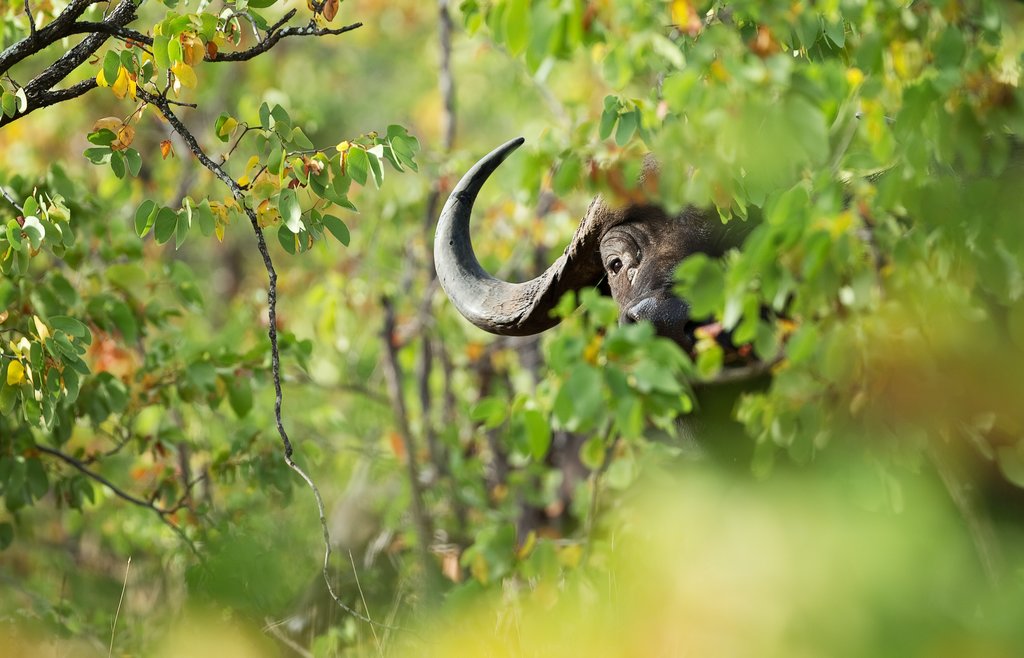
By November, the heat intensifies, humidity levels surge with the onset of the rainy season, and mosquitoes become more prevalent. The summer months can be uncomfortably hot, with daytime high temperatures averaging 90°F (32°C) and sometimes peaking well above 100 °F (38 °C). The muggy air can make clothing feel sticky and uncomfortable. Late afternoons and evenings often bring dramatic thunderstorms, especially during December-February, the hottest and wettest months. However, all-day rain is rare, and mornings are typically clear. This is the time to relax and enjoy the relative comfort of your lodge or camp during the midday hours. During the summer months, we recommend opting for an air-conditioned lodge, as camping requires a high degree of tolerance for both heat and rain.
The game viewing experience also undergoes a transformation. Bush walks become more challenging due to the rains, and many safari vehicles are open to the elements, which can be uncomfortable in driving rain. Be sure to pack rain gear, including a poncho, as well as mosquito repellent and sunscreen.
Despite the challenges, the summer months offer unique photographic opportunities. The landscape shimmers with dozens of shades of green, and the dramatic interplay of sunlight and thunderstorms creates colorful and spectacular backdrops. The dust of summer settles, the air feels cleaner and clearer, and everything smells fresh.
**Game viewing:** During summer, wildlife tends to be most active during the early mornings and evenings, seeking shade during the hot midday and early afternoon hours. The rains replenish rivers and waterholes, causing animals to disperse into the newly lush bushveld, making them more difficult to spot. Game viewing is more challenging than in the dry season, as many animals remain well-hidden in the dense undergrowth.
Bird-watching reaches its peak as summer migrants arrive in November, and many resident birds display spectacular breeding plumage. November and December offer memorable Kruger safari experiences, with frequent sightings of wildlife with their newborn young. Impala lambs, for example, are typically born in November after the first decent rains, and predators enjoy abundant hunting opportunities during this action-packed month.
**Crowds:** Tourist crowds thin with the arrival of the wet season. In fact, a large part of Kruger’s appeal in November lies in its tranquility, with relatively few visitors. Prices also tend to fall in November, making it a great time to take advantage of bargain shoulder season rates before they spike again for the Christmas and New Year’s period. December and January coincide with South Africa’s summer school holidays, resulting in a mid-summer surge in visitors, many of whom drive in for day trips. To avoid the crowds, consider visiting in late January or February, which generally represents the period of lowest visitation to Kruger National Park.
### Embracing Kruger in Autumn (April-May)
April marks a transitional month, as the insufferably high temperatures of summer give way to more tolerable levels. Afternoon temperatures in April average around 81°F/27°C under clear, cloudless skies, and rainfall and humidity begin to diminish. By late May, average early morning temperatures will have fallen to around 54°F (18°C). In April, the landscape is at its greenest, with the vegetation at its most lush and thick. By May, the vegetation begins to dry out, and the bushveld starts to turn brown.
**Game viewing:** Early in the season, the thick vegetation can make wildlife viewing the most challenging of any time of year. However, by late May, as the vegetation thins, conditions begin to resemble those of the dry season. This is also the prime rutting season, especially for antelope species, offering the opportunity to witness males battling over territories and harems, a truly memorable experience. Remember to pack a warm jacket for early morning game drives, as nights can be quite cold by May.
**Crowds:** Autumn is an excellent time to visit Kruger National Park if you prefer fewer visitors and lower prices. Finding lodging is easier than during any other season, but it’s still advisable to make reservations well in advance.
## Average Temperatures
**Winter (June-August)**
Minimum: 54°F/12°C
Maximum: 77°F/25°C
**Spring (September-October)**
Minimum: 68°F/20°C
Maximum: 86°F/30°C
**Summer (November-March)**
Minimum: 72°F/22°C
Maximum: 95°F/35°C
**Autumn (April-May)**
Minimum: 64°F/18°C
Maximum: 84°F/28°C
## Malaria
Kruger National Park is a high-risk malaria area during the months of October through May. While the majority of travelers to Kruger return home without any issues, it is crucial to take precautionary measures, including taking preventative anti-malarial drugs as prescribed by your doctor.
Here are some additional precautions to minimize your risk of being bitten by mosquitoes:
* Wear light-colored, long-sleeved shirts and full-length pants, along with closed-toed shoes, especially during the evenings, to minimize exposed skin. Consider purchasing safari clothing pre-impregnated with Pyrethroid or similar mosquito repellent.
* Apply insect repellents to exposed skin areas every 4-6 hours.
* Malaria-carrying mosquitoes typically feed in the early evenings and mornings, so remain indoors from dusk to dawn as much as possible.
* Burn insecticide coils or use electrically heated insecticide tablets in your room at night.
* Keep doors and windows closed at night, and spray knock-down insecticide inside your room in the early evening.
* Ensure mosquito nets around your bed are securely closed at night.
During the dry season, mosquitoes are far less prevalent, but travelers should still wear insect repellent and adhere to the above recommendations as a precaution.
## Conclusion: Determining the Optimal Time to Visit Kruger National Park
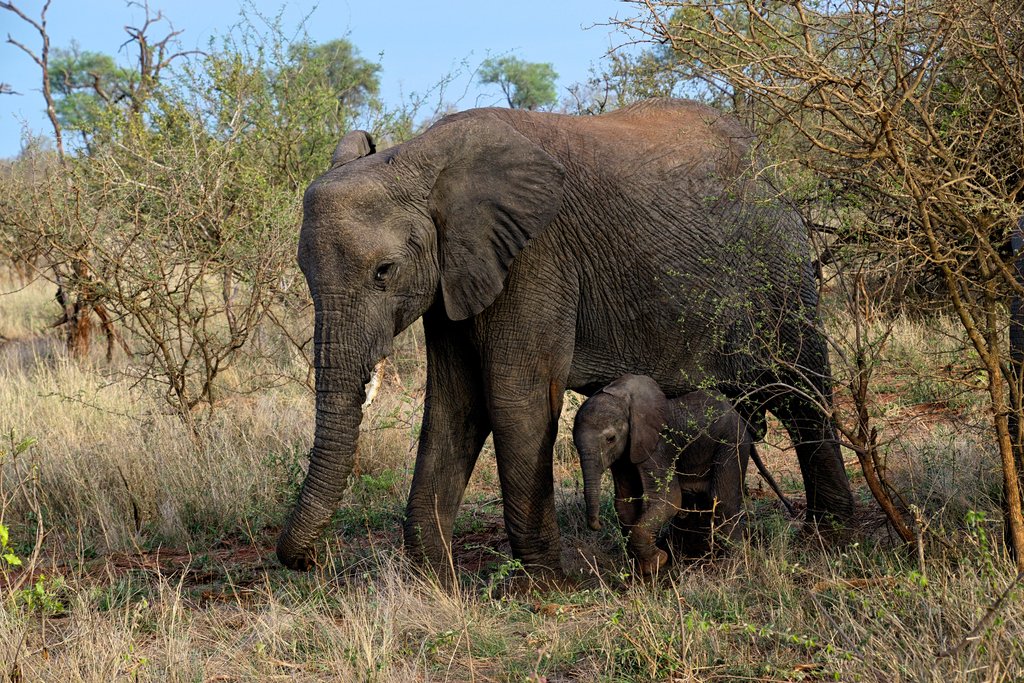
As you’ve gathered from the preceding information, selecting the best time to visit Kruger National Park hinges on your personal preferences and priorities. Factors to consider include your tolerance for heat and humidity, your interest in birding versus general game viewing, your comfort level with crowds, and your budgetary constraints.
If your primary objective is to guarantee close-up encounters with the Big Five and other iconic game species, the months of June to October are the most favorable. The weather is warm during the day, with cool evenings and minimal rainfall. The sparser bush, shorter grasses, and limited surface water create optimal conditions for observing concentrations of wildlife. However, it’s worth noting that this period also coincides with the high season for visitors.
If you prefer a more intimate and personalized experience, where your safari vehicle isn’t part of a long convoy, consider visiting during the summer months, but be prepared for the heat and humidity. Alternatively, explore one of the private game reserves bordering Kruger National Park, particularly the Sabi Sands area. These reserves offer a greater likelihood of close encounters with elephant, lion, and leopard, as rangers are permitted to drive safari vehicles off-road into the bush for eye-to-eye encounters that are not allowed within Kruger National Park.
For maximum adorableness, plan your visit for October or November, when numerous species give birth, filling the bushveld with newborns. Witness the charm of baby antelopes, baby baboons, baby warthogs, and baby wildebeest. However, remember that lions, leopards, and cheetahs will also be actively hunting, eager to capitalize on the abundance of prey.
B-2289

